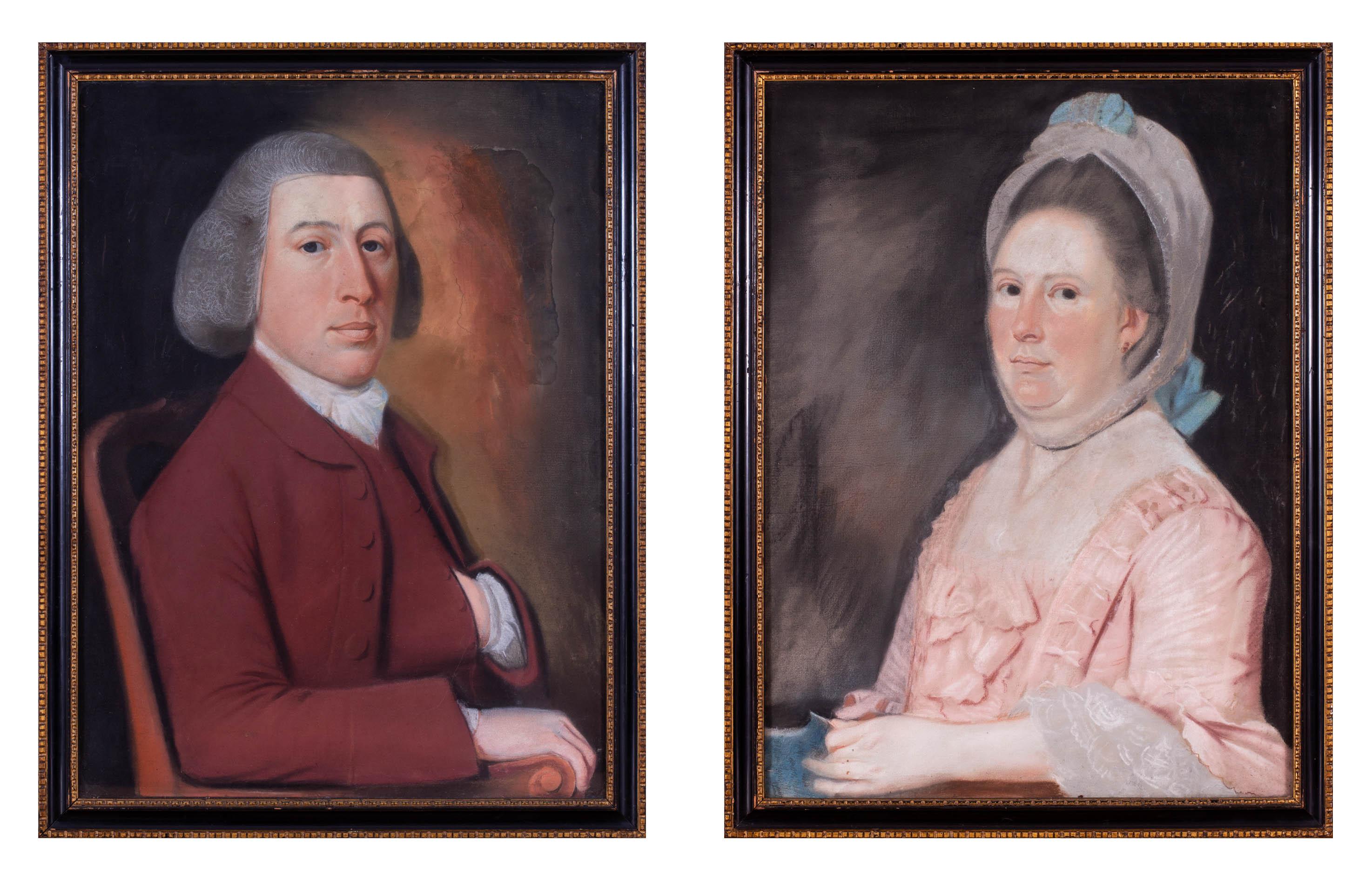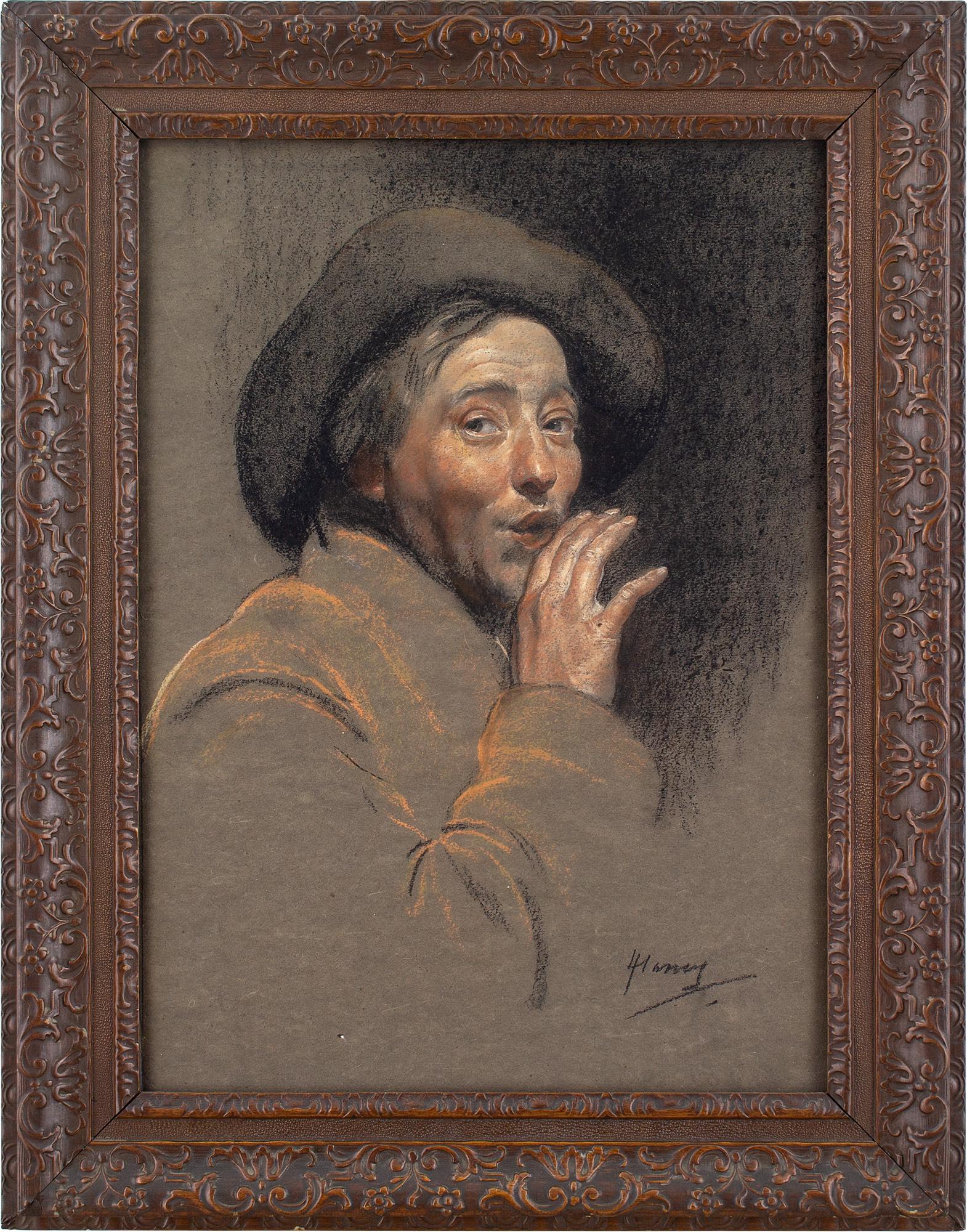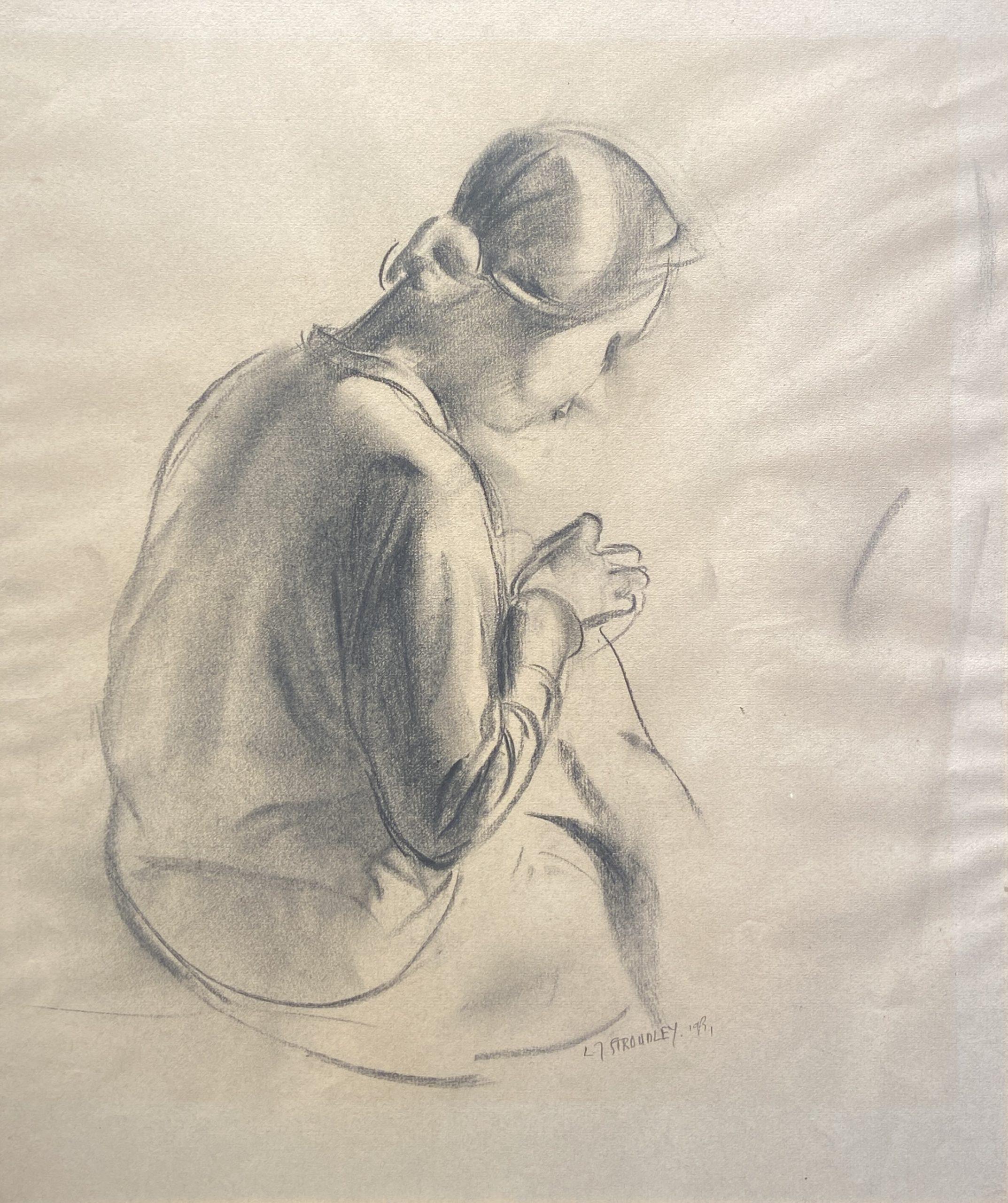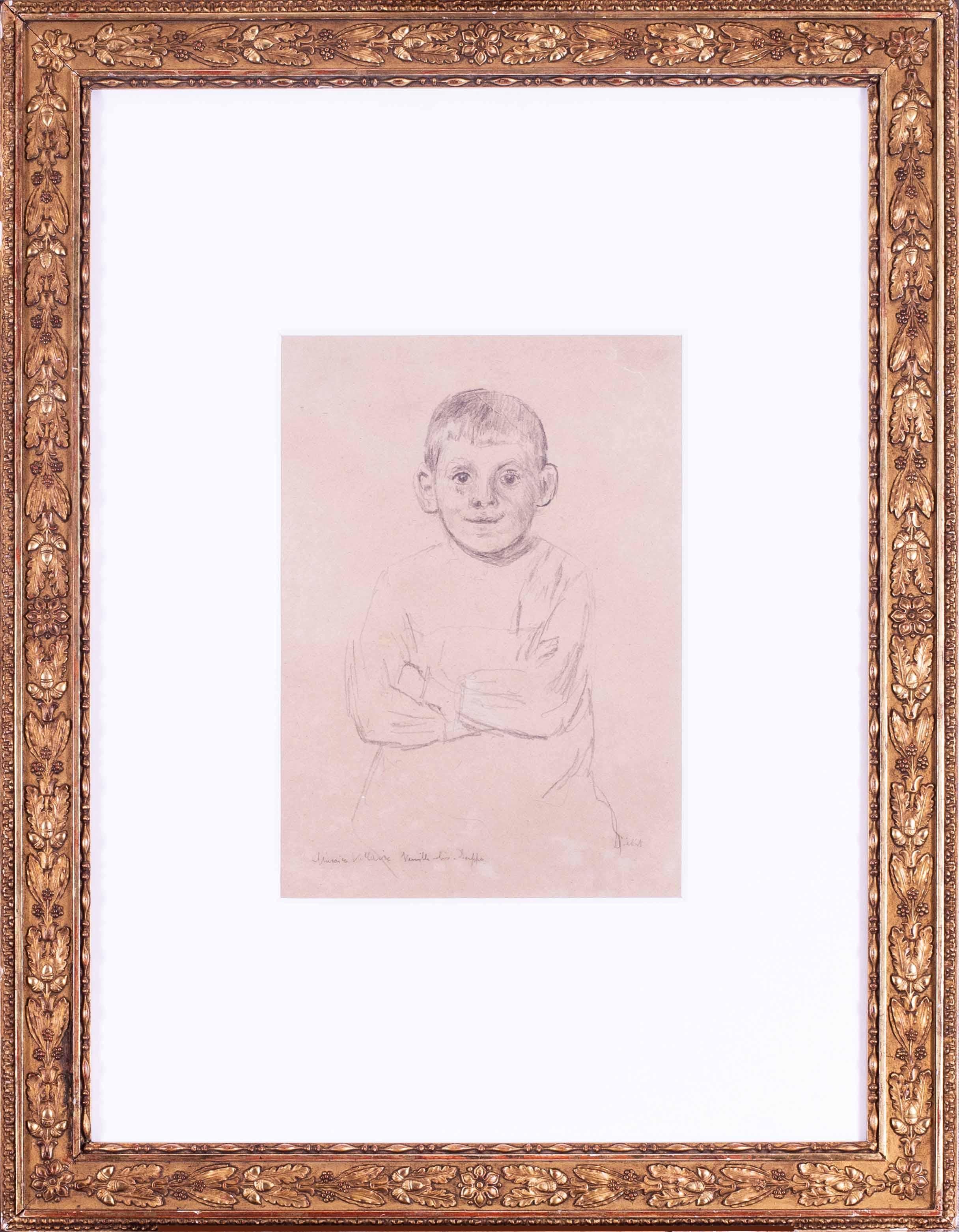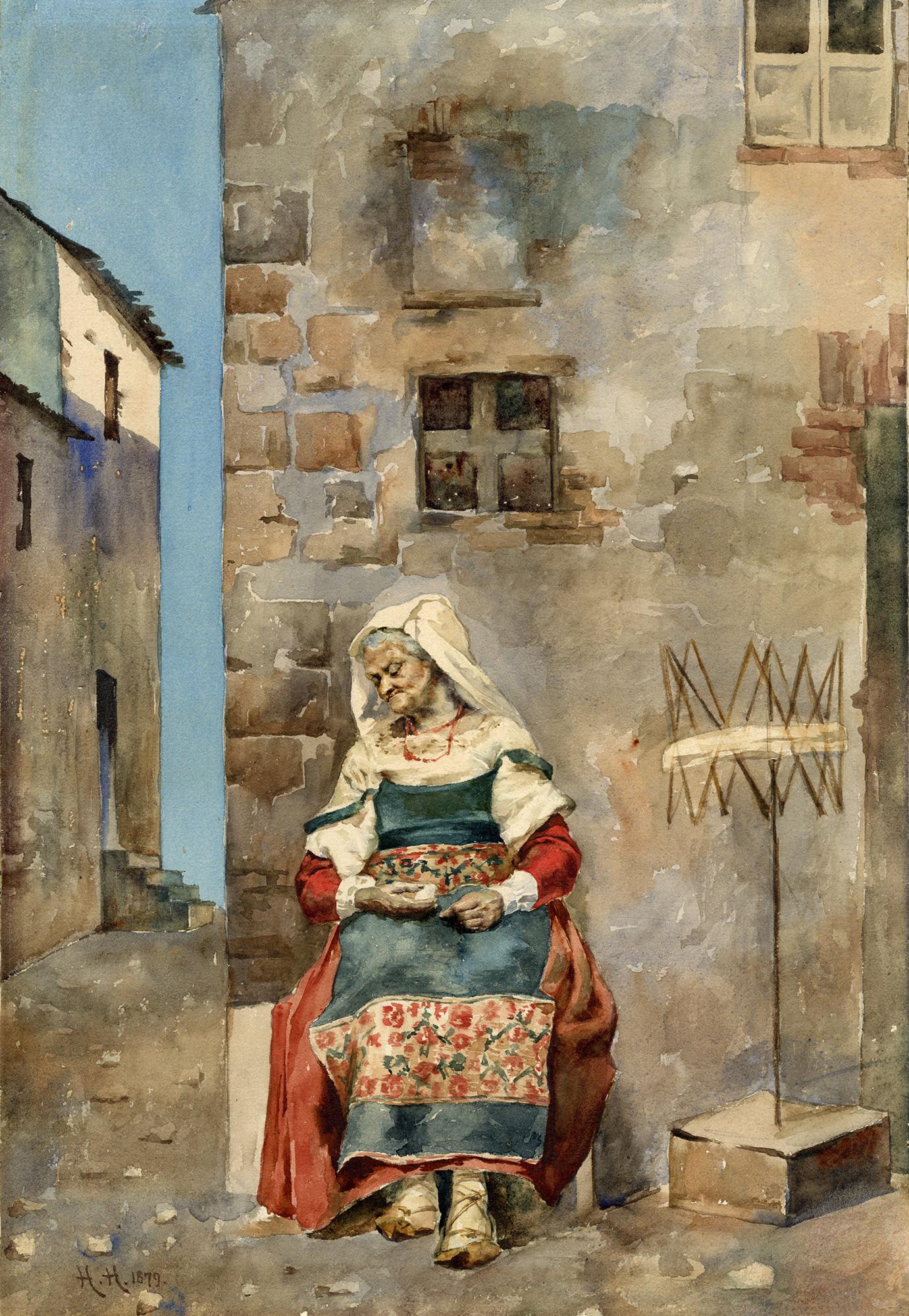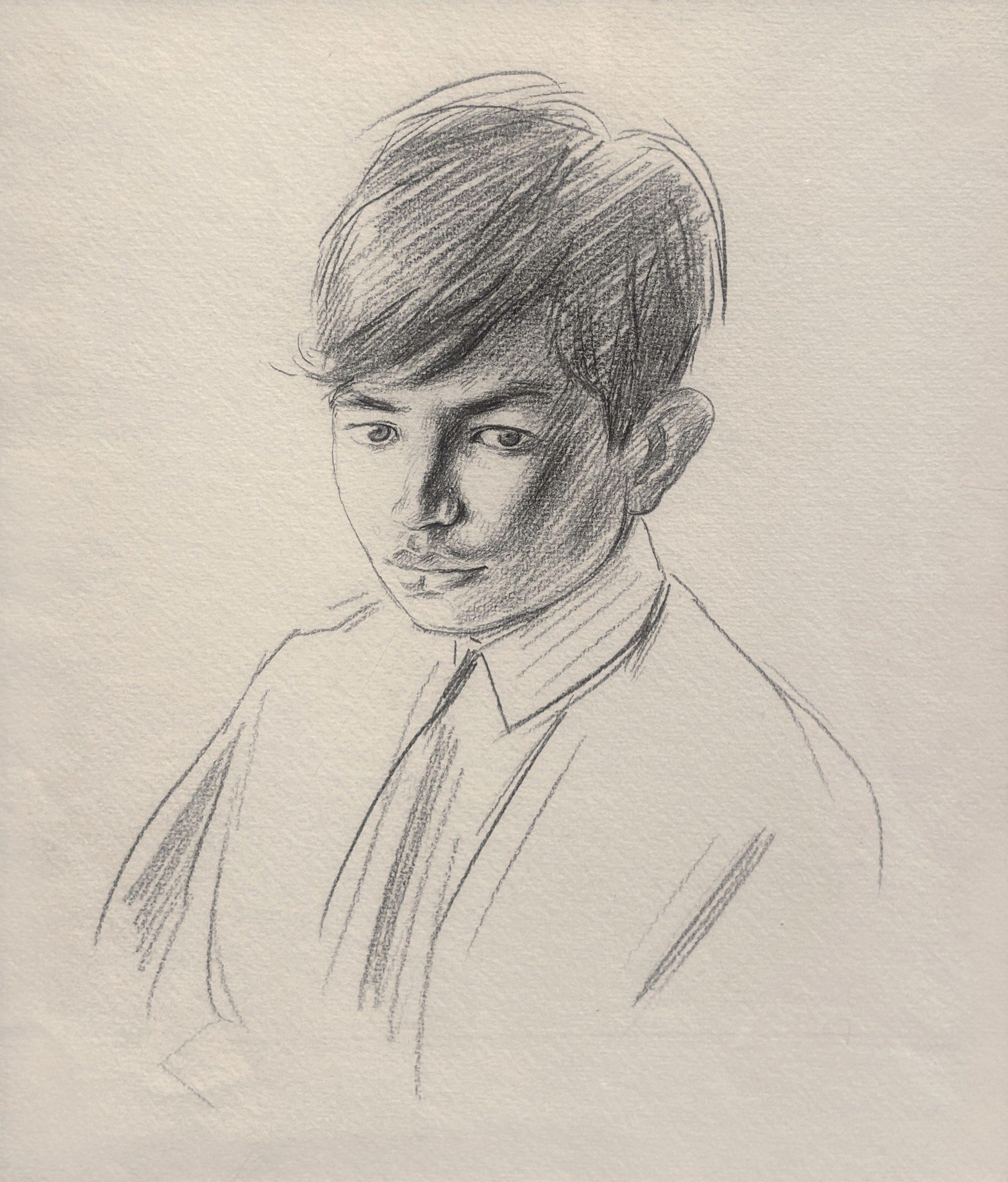Items Similar to Portrait of a Man Wearing a Turban, 18th Century Pastel Drawing
Want more images or videos?
Request additional images or videos from the seller
Thomas FryePortrait of a Man Wearing a Turban, 18th Century Pastel Drawing
About the Item
Pastel on paper
Image size: 13 x 17 1/2 inches (33 x 44.5 cm)
Mounted and framed
This original pastel drawing by Thomas Frye is a half-length portrait of a man dressed in a turban. This drawing is the original sketch for one of the heads depicted in Frye's collection 'Twelve Mezzotint Prints' of 1760 and it can be assumed that this pastel work was created earlier of this same year.
Two versions of the print, created from this original work, are currently held in the collection of the National Portrait Gallery and the Metropolitan Museum of Art.
Frye's evocative figures, although presumably based on living models, exceed the conventions of portraiture, and also function as character studies. The man shown here - dressed in the fashionable 'Turkish' manner - turns with parted lips as if poised to speak, while raising the elegant fingers in one hand in a rhetorical gesture. His long eyelashes and smoothly rendered wrinkles and dimples are hallmarks of Frye's refined style.
The Artist
Thomas Frye (c. 1710 – 3 April 1762) was an Anglo-Irish artist, best known for his portraits in oil and pastel, including some miniatures and his early mezzotint engravings. He was also the patentee of the Bow porcelain factory, London, and claimed in his epitaph to be "the inventor and first manufacturer of porcelain in England," though his rivals at the Chelsea porcelain factory seem to have preceded him in bringing wares to market. The Bow porcelain works did not long survive Frye's death; their final auctions took place in May 1764.
Frye was born at Edenderry, County Offaly, Ireland, in 1710; in his youth he went to London to practice as an artist. His earliest works are a pair of pastel portraits of boys, one dated 1734 (Earl of Iveagh). For the Worshipful Company of Saddlers he painted a full-length portrait of Frederick, Prince of Wales (1736, destroyed 1940), which he engraved in mezzotint and published in 1741. With his silent partner, a London merchant Edward Heylyn, he took out a patent on kaolin to be imported from the English colony of Virginia in November 1745, and became manager of the Bow factory from its obscure beginnings in the 1740s. He retired to Wales in 1759 for the sake of his lungs, but soon returned to London and resumed his occupation as an engraver, publishing the series of life-size fancy portraits in mezzotint, by which he is most remembered. He died of consumption on 2 April 1762 and was buried at Hornsey.
- Creator:Thomas Frye (1710 - 1762)
- Dimensions:Height: 17.5 in (44.45 cm)Width: 13 in (33.02 cm)
- More Editions & Sizes:1 of 12Price: $8,199
- Medium:
- Movement & Style:
- Period:1750-1759
- Condition:
- Gallery Location:London, GB
- Reference Number:1stDibs: LU52412632362
About the Seller
5.0
Vetted Seller
These experienced sellers undergo a comprehensive evaluation by our team of in-house experts.
Established in 2007
1stDibs seller since 2014
64 sales on 1stDibs
Typical response time: 2 hours
- ShippingRetrieving quote...Ships From: London, United Kingdom
- Return PolicyA return for this item may be initiated within 14 days of delivery.
More From This SellerView All
- Mending, Graphite Portrait, 20th Century Modern British, Signed ArtworkBy James StroudleyLocated in London, GBGraphite on paper, signed lower right Image size: 17 x 21 inches (43.25 x 53.25 cm) Contemporary frame James Stroudley Stroudley was born in London on 17 June 1906, the son of Jam...Category
20th Century English School Portrait Drawings and Watercolors
MaterialsPaper, Graphite
- Portrait of a Young Male, Graphite on paper sketch, 20th Century English ArtistBy John SergeantLocated in London, GBGraphite on paper Image size: 10 1/4 x 8 1/2 (26 x 22 cm) Mounted Drawing was at the heart of all of his artistic practice. A friend once recalled an anecdote that out on a walk he ...Category
20th Century English School Portrait Drawings and Watercolors
MaterialsPaper, Graphite
- Portrait of a Woman in Thought, 20th Century English Oil PaintingBy Caroline HutchinsonLocated in London, GBOil on canvas Image size: 16 x 20 inches (40.5 x 51 cm) This portrait is painted in an impressionist palette and is likely to have been created by Caroline Hutchinson circa 1955. It...Category
20th Century English School Portrait Drawings and Watercolors
MaterialsCanvas, Oil
- Chelsea, Graphite Portrait, English School 20th CenturyLocated in London, GBGraphite on paper, initialled and dated 1960 Image size: 8 x 6 inches (20 x 15 cm) Handmade frameCategory
1960s English School Portrait Drawings and Watercolors
MaterialsGraphite
- The Gaze, Signed Graphite 20th Century PortraitLocated in London, GBGraphite on paper, signed bottom right Image size: 13 x 8 3/4 inches (33 x 22.25 cm) Original frame Dora Thacher Clarke, later Dora Middleton, (1895–1989) was a British sculptor and wood carver who also wrote about, and promoted African art. Clarke was born in Harrow in Middlesex. Her father, Joseph Thacher Clarke was an American architect. Clarke won a scholarship that allowed her to attend the Slade School of Fine Art. Aged fifteen, Clarke initially studied at the Slade on a part-time basis for three days each week throughout 1910 and 1911 but during 1915 and 1916 she studied sculpture there as a full-time student. Clarke first exhibited at the Royal Academy in 1923 and continued to do so until 1959. In the early 1930s she was a regular exhibitor in group shows at the Goupil Gallery and in March 1937 had her first solo show at the French Gallery. She also exhibited at the Paris Salon and with the Royal Society of British Artists. Clarke's works included bronze castings, memorials and wood sculptures, often of African heads. For example she was commissioned to sculpt the posthumous portrait bust of Sir Walter Morley Fletcher. The most notable of her memorials is the panel and medallion tribute to Joseph Conrad at Bishopsbourne in Kent, which was unveiled in 1927. Clarke also wrote about, and promoted African art and spent a year, between 1927 and 1928 in Kenya, where she made many drawings which when she returned to London she used as the basis for wood carvings and bronzes of tribal figures. Wood carving became her technique of choice, often working with hardwoods and, on occasion, sperm whale teeth. Clarke married Admiral Gervase B Middleton in 1938 but rarely exhibited work under her married name. During World War II, Clarke was commissioned by the War Artists' Advisory Committee to produce a portrait medallion depicting a serviceman who had been awarded the George Cross. This proved to be the only portrait medallion acquired for the WAAC collection. Sculptures by Clarke are held in various museums, including the Ashmolean Museum which also holds a 1936 portrait of her by Orovida Camille Pissarro.Category
Mid-20th Century English School Portrait Drawings and Watercolors
MaterialsGraphite
- A Study of Thomas Cooper Gotch, 19th Century Graphite SketchLocated in London, GBGraphite on paper Image size: 5 1/2 x 20 1/2 inches (14 x 52 cm) Framed This sketch is a portrait of Thomas Gotch is by his lifelong friend and confidante, Jane Ross, whom he met at...Category
Mid-19th Century English School Portrait Drawings and Watercolors
MaterialsGraphite
You May Also Like
- English school, circa 1784 'Mr and Mrs Rogers', pastel on paper, a pairLocated in Petworth, West SussexA wonderful naive pair of 18th Century portraits of Mr and Mrs Rogers, (A pair). The details are: English school, circa 1784 Mr and Mrs Rogers Pastel on paper Inscribed with sitter...Category
18th Century English School Portrait Drawings and Watercolors
MaterialsPaper, Pastel
- Herbert Johnson Harvey, The Whisper, Self-Portrait, PastelBy Herbert Johnson HarveyLocated in Cheltenham, GBThis early 20th-century pastel by Herbert Johnson Harvey (1884-1928) depicts the artist dressed in traditional peasant clothing while surreptitiously whispering. Harvey carried an a...Category
1920s English School Portrait Drawings and Watercolors
MaterialsPaper, Pastel
- Sickert pencil portrait drawing of Maurice Villain in Dieppe, 1901, BritishBy Walter SickertLocated in Petworth, West SussexWalter Richard Sickert RA RBA (British, 1860-1942) Portrait of Maurice Villain pencil on paper indistinctly inscribed and signed `Maurice Villain …...Category
Early 20th Century English School Portrait Drawings and Watercolors
MaterialsPaper, Pencil
- ContemplationBy Sir Hubert Von Herkomer R.A. RWS.Located in Middletown, NYThis is an engaging work with masterful detail that will unfold for an intent viewer, particularly in the area of the figure's well-worn hands, and her traditional clothing. The image depicts a Bavarian woman deep in thought while winding a skein of wool. She is seated outside of her home, where she has brought her yarn swift...Category
1870s English School Portrait Drawings and Watercolors
MaterialsWatercolor, Handmade Paper
- Study of a girl sitting and reading a bookBy William HoareLocated in Bath, SomersetA study in red chalk of a girl sitting and reading a book. Red chalk on paper under glass in a giltwood and gesso frame. This small drawing has a sense of intimacy in the capturing of a moment where the sitter is seemingly unaware of being observed, unlike the feeling of formailty and self-awareness in a staged portrait sitting Provenance: Private collection, Somerset With J. Davey & Sons Ltd, Liverpool William Hoare...Category
Late 18th Century English School Figurative Drawings and Watercolors
MaterialsPaper, Chalk, Glass
- William Moore, Portrait Of A Boy, WatercolourLocated in Cheltenham, GBThis fine portrait by British artist William Moore (1790-1851) depicts a young man holding a book. He’s wearing a white shirt, black necktie, waistcoat and unbuttoned frock coat. During the...Category
19th Century English School Portrait Drawings and Watercolors
MaterialsPencil, Paper, Watercolor
Recently Viewed
View AllMore Ways To Browse
18th C Drawings
18th Mezzotint
18th Century Mezzotints
Turkish Porcelain Antique
Painting Man In Turban
Pair Antique Watercolors
Vintage Smiths Timer
Le Fumeur Picasso
Vintage Spanish Guitars
Fran Lew
Virginia Conroy
Vintage Railway Jack
Contemporary White Art
Abstract Acrylic Art
Sculpture Artists
Contemporary Painting Canvas
Black And White Art Prints
Artist Light
